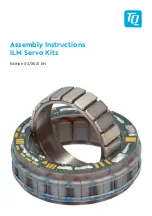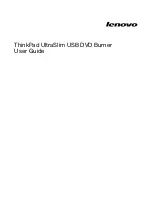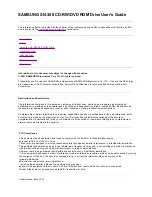
1.
1.
2.
3.
4.
1.
2.
3.
1.
2.
Application
Settings
High load at low
speed
Parameter 1-66 Min. Current at Low Speed
. Increase current to a value between default and maximum de-
pending on the application
No-load application
Adjust
parameter 1-18 Min. Current at No Load
to achieve smoother motor operation by reducing torque
ripple and vibration.
Flux sensorless con-
trol principle only
Adjust
parameter 1-53 Model Shift Frequency
. Example 1: If the motor oscillates at 5 Hz, and dynamics per-
formance is required at 15 Hz, set
parameter 1-53 Model Shift Frequency
to 10 Hz. Example 2: If the applica-
tion involves dynamic load changes at low speed, reduce
parameter 1-53 Model Shift Frequency
. Observe
the motor behavior to make sure that the model shift frequency is not reduced too much. Symptoms of
inappropriate model shift frequency are motor oscillations or drive tripping.
4.2.2.2 PM Motor Set-up
This section describes how to set up a PM motor.
Initial programming steps
To activate PM motor operation, select
[1] PM, non-salient SPM
in
parameter 1-10 Motor Construction
.
Programming motor data
After selecting a PM motor, the PM motor-related parameters in
parameter groups 1-2* Motor Data
,
1-3* Adv. Motor Data
, and
1-4*
Adv. Motor Data II
are active. The necessary data is on the motor nameplate and on the motor datasheet.
Program the following parameters in the order listed:
Parameter 1-24 Motor Current
.
Parameter 1-25 Motor Nominal Speed
.
Parameter 1-26 Motor Cont. Rated Torque
.
Parameter 1-39 Motor Poles
.
Run a complete AMA using
parameter 1-29 Automatic Motor Adaptation (AMA) [1] Enable Complete AMA
.
If a complete AMA is not performed, configure the following parameters manually:
Parameter 1-30 Stator Resistance (Rs)
Enter the line-to-common stator winding resistance (Rs). If only line-line data is availa-
ble, divide the line-line value by 2 to get the line-common value.
Parameter 1-37 d-axis Inductance (Ld)
Enter the line-to-common direct axis inductance of the PM motor. If only line-line data
is available, divide the line-line value by 2 to get the line-common value.
Parameter 1-40 Back EMF at 1000 RPM
. Enter the line-to-line back EMF of the PM Motor at 1000 RPM (RMS value). Back EMF is
the voltage generated by a PM motor when no drive is connected and the shaft is turned externally. It is normally specified
for nominal motor speed or for 1000 RPM measured between 2 lines. If the value is not available for a motor speed of
1000 RPM, calculate the correct value as follows: If back EMF is, for example, 320 V at 1800 RPM, it can be calculated at
1000 RPM as follows: Back EMF = (Voltage/RPM)x1000 = (320/1800)x1000 = 178.
Test motor operation
Start the motor at low speed (100–200 RPM). If the motor does not turn, check the installation, general programming, and
motor data.
Check if the start function in
parameter 1-70 Start Mode
fits the application requirements.
4.2.2.2.1 Rotor Detection
This function is the recommended selection for applications where the motor starts from standstill, for example pumps or convey-
ors. On some motors, a sound is heard when the drive performs the rotor detection. This does not harm the motor.
4.2.2.2.2 Parking
This function is the recommended selection for applications where the motor is rotating at slow speed, for example windmilling in
fan applications.
Parameter 2-06 Parking Current
and
parameter 2-07 Parking Time
can be adjusted. Increase the factory setting of
these parameters for applications with high inertia.
4.2.2.2.3 Application-specific Adjustment when Running VVC+
VVC+ is the most robust control mode. In most situations, it provides optimum performance without further adjustments. Run a
complete AMA for best performance.
Start the motor at nominal speed. If the application does not run well, check the VVC+ PM settings. Table 3.4 contains recommenda-
tions for various applications.
AU373327181955en-000101 / 130R1208
62 | Danfoss A/S © 2021.08
Parameter Descriptions
VLT® AutomationDrive EZ FC 321
Programming Guide
















































